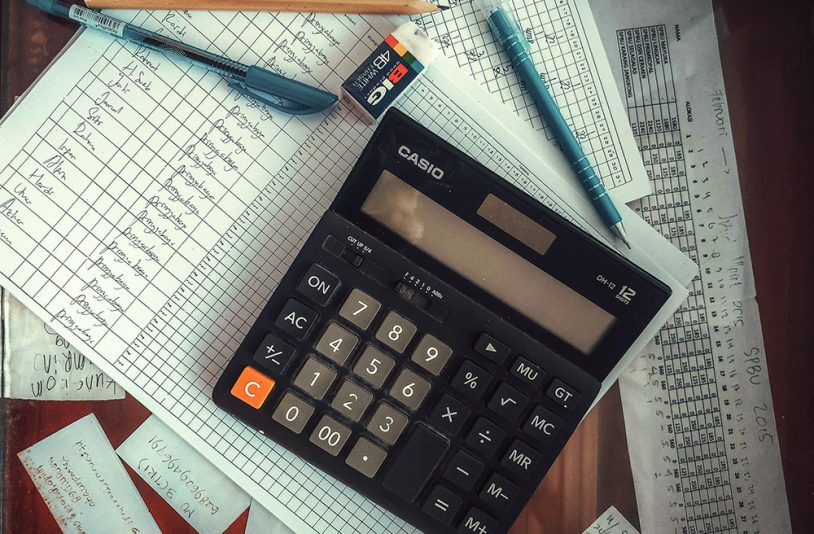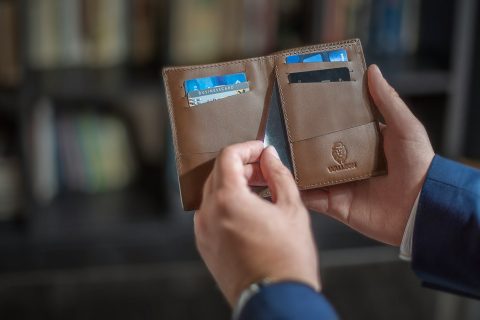
When managing your money, whether for personal use or business, it’s important to understand the basics of assets and liabilities. These two terms may sound technical, but they are concepts that significantly affect your financial health.
Think of assets as the things you own that have value, like cash, a car, or even your home. On the other hand, Liabilities are the things you owe, such as loans, credit card debt, or a mortgage. Knowing the difference between the two can help you make smarter financial decisions, track your net worth, and plan for the future.
In this guide, we’ll explain what assets and liabilities really mean, explore the key differences between them, and provide real-life examples to make it all easy to understand.
Jump to Section [Hide]
Understanding Assets
Assets are things you own that have value. They can help grow your wealth or provide financial security over time.
What Are Assets?
Assets are things you own that have value. They help businesses make money or provide future benefits.
These can include cash, real estate, accounts receivable, and equipment. Some assets, like intellectual property or investments, grow in worth over time. Others, like prepaid expenses or marketable securities, can be used quickly for business needs.
Assets increase your net worth and improve financial stability.
Types of Assets
Assets fall into two main types: current and noncurrent. Current assets are things you can turn into cash within 12 months. These include cash, accounts receivable, prepaid expenses, and marketable securities.
For example, if you own a savings account or products ready to sell in your business, they count as current assets.
Noncurrent assets take longer than a year to convert into cash. These often include property, plant, equipment (PPE), real estate, or intangible items like intellectual property. Think of machinery used for production or copyrights for creative work as examples of noncurrent assets.
Both types add economic value and help build financial health over time.
Current Assets
Current assets are items you can turn into cash within a year. These include cash, accounts receivable, inventory, prepaid expenses, and marketable securities. For example, cash and cash equivalents like money in your checking account or marketable securities that you can sell quickly fit this category.
Notes receivable due within 12 months also count as current assets. These help measure your liquidity or how easily you cover short-term costs. Businesses rely on these for smooth operations and to manage daily expenses effectively.
Noncurrent (Fixed) Assets
Fixed assets include things like vehicles, equipment, and property. These are long-term items your business owns. They help in daily operations but don’t turn into cash quickly.
These can be tangible, like buildings or machinery, or intangible, such as patents and copyrights. For example, a company’s factory is a fixed asset because it creates products over time.
Common Examples of Assets
Assets can include things you use or own that have value. Cash in hand, accounts receivable worth $30,000, and inventory valued at $20,000 are examples of current assets. Other items like marketable securities totaling $10,000 and prepaid expenses of $5,000 also count.
Altogether, these make up a total of $115,000 in current assets.
Noncurrent assets last longer than a year. For example, property or equipment might be valued at $200,000. Intangible items like intellectual property may add another $50,000 to the tally.
Long-term investments such as bonds could contribute about $25,000 more. In this case, these noncurrent assets together equal $275,000.
Importance of Assets in Financial Planning
Assets help build long-term financial stability. They provide future economic benefits, like income or growth opportunities. For example, owning real estate can bring rental income or an increase in value over time.
Cash reserves and marketable securities ensure that you are ready for emergencies.
Asset ownership also supports goals like retirement plans and investments. Tangible assets, such as property or equipment, hold lasting value that helps secure loans if needed. Intangible assets, like intellectual property, enhance revenue through innovation or branding efforts.
Strong assets improve your net worth and financial health by increasing your economic value over time.
Understanding Liabilities
Liabilities are what you owe to others, debts or obligations. They can affect your financial health and future plans.
What Are Liabilities?
Liabilities are what you owe to others. These can include debts, unpaid bills, or future financial promises.
Examples are credit card balances, mortgage payments, and business loans. On their balance sheets, companies may also list deferred revenue or accounts payable as liabilities.
Types of Liabilities
There are two main types of liabilities: current and noncurrent. Current liabilities must be paid within 12 months. Examples include accounts payable, accrued expenses, and short-term loans like lines of credit.
These are tied to daily business operations or urgent bills.
Noncurrent liabilities take longer than a year to pay off. Long-term debts such as mortgages, bonds payable, deferred revenue, or large loans fall under this category. They often support big investments like property purchases or company expansions.
Balance both carefully for financial stability and better cash flow management!
Current Liabilities
Current liabilities are debts you must pay within a year. These include accounts payable, payroll liabilities, and short-term loans. Credit card balances also fall into this category.
For example, if your business owes $1,000 for office supplies, that is an accounts payable.
Income tax liabilities are another example. This means taxes owed to the government but not paid yet. Companies often handle current liabilities with cash or current assets like accounts receivable or prepaid expenses.
Managing these properly keeps your finances stable and supports smooth operations.
Noncurrent (Long-Term) Liabilities
Noncurrent liabilities are long-term debts. You need to pay these over a period longer than one year. Examples include long-term loans, mortgages, and deferred revenue. For instance, mortgage payments often span 15 to 30 years.
Post-employment benefits also fall under this category. These might include pensions or health care for retired employees. Businesses track noncurrent liabilities on their balance sheets to effectively plan future financial obligations.
Common Examples of Liabilities
Liabilities include debts or obligations you owe others. For example, accounts payable for $8,000 and short-term loans of $5,000 are common in business finance. Long-term debt like a mortgage of $150,000 also falls under this category.
In smaller businesses, accrued expenses such as unpaid bills might total $3,000. Deferred revenue is another example; this could be prepayments from customers you have not yet earned, like a bakery with deferred income of $2,000.
All these combine to affect your financial health and balance sheet directly.
Role of Liabilities in Financial Decision-Making
Liabilities shape your ability to make financial choices. They impact cash flow, credit scores, and loan approvals. For example, high debt, such as a mortgage or long-term loans, can lower your borrowing power and raise interest rates on new loans.
Managing liabilities helps you decide what risks to take for growth. Companies often use accounts payable or lines of credit to fund operations without cutting into profits. Keeping liabilities under control improves financial stability and supports future investments.
Key Differences Between Assets and Liabilities
Assets help grow wealth, while liabilities reflect what you owe. Learn how they shape your financial future.
Definition and Function
Assets are things you own that hold value. They help generate income or provide future benefits. Examples include cash, real estate, and marketable securities. These items add to your total assets on a balance sheet.
Liabilities are what you owe to others. They come from debts or obligations like loans, accounts payable, or mortgage payments. Liabilities reduce your net worth and show financial obligations on an income statement.
Value to Financial Health
Assets increase your net worth. They represent what you own and can use for wealth building. Liabilities, on the other hand, lower your net worth. They are financial obligations like loans or unpaid bills.
Growing assets while reducing liabilities improves financial health. For example, paying off a mortgage reduces long-term debt and increases equity in real estate. Healthy finances mean better credit scores and easier access to investments or loans.
Impact on Net Worth
Your net worth is the value of what you own minus what you owe. If your total assets are $150,000 and liabilities are $70,000, your equity is $80,000. This means a positive net worth.
Negative net worth occurs when liabilities exceed assets. For example, if assets total $400,000 but liabilities reach $450,000, there’s a $50,000 shortfall. Reducing debts or growing assets boosts financial health over time.
Examples in Real-Life Scenarios
Buying a car on credit involves both an asset and a liability. The car itself is an asset, while the loan you owe becomes a liability. If you pay part of it upfront, that cash reduces your current assets.
Starting a business also shows this balance. Purchasing equipment for operations counts as an asset. But if bought on credit, accounts payable create a matching liability until repaid.
These examples show how financial health depends on managing both sides effectively.
Assets vs. Liabilities in Everyday Life
Your daily finances involve both assets and liabilities. Knowing how they work can improve your cash flow and net worth.
Personal Finance Examples
Buying a home involves both assets and liabilities. The house is an asset because it holds value, but the mortgage you owe is a liability. For example, if your home is worth $250,000 and your mortgage balance is $150,000, you hold equity of $100,000.
Owning a car works the same way. The vehicle itself counts as an asset valued at its current worth. If you took out a car loan to pay for it, that loan becomes your liability. Let’s say the car’s market value is $20,000 while your loan stands at $10,000; this leaves you with equity of $10,000 in the vehicle.
Business Accounting Examples
Inventory bought on credit increases assets as inventory, but it also creates liabilities like accounts payable. This shows how businesses track what they owe while growing their stock.
Customer prepayments provide cash upfront, counted as an asset. At the same time, this money becomes a liability, labeled unearned revenue, until services or goods are delivered. These examples highlight balance in business accounting practices.
Case Study: Personal Balance Sheet Breakdown
You have $1,200,000 in total assets. This includes cash, property like real estate, and possibly intangible assets. On the other side are liabilities totaling $605,000. These might be mortgage payments, accounts payable to lenders like banks, or a line of credit.
Your equity is calculated by subtracting liabilities from assets. Here it equals $595,000. This clearly shows your financial health and net worth on a financial position statement.
To better manage this balance sheet, focus on growing current assets while reducing noncurrent liabilities such as long-term debt or accrued expenses.
How to Calculate Assets and Liabilities
Learn simple ways to measure assets and liabilities, and find out how they affect your net worth today!
Formula for Total Assets
Add current assets to noncurrent assets. This gives the total value of everything owned.
For example, if your current assets are $115,000 and your noncurrent assets are $275,000, the total is $390,000. Use this formula for balance sheets to check financial health or net worth.
Formula for Total Liabilities
To find total liabilities, add current liabilities and noncurrent liabilities. Current liabilities include short-term obligations like accounts payable or accrued expenses. Noncurrent liabilities cover long-term debt, such as a mortgage or deferred taxes.
For example, if your business has $30,000 in current liabilities and $40,000 in noncurrent ones, the total is $70,000. Use this formula to better understand your financial health and track money owed.
How to Determine Net Worth
Subtract your total liabilities from your total assets. This gives you your net worth. Use the formula: Net Worth = Assets – Liabilities.
For example, if your assets are $1,200,000 and liabilities are $605,000, your net worth is $595,000. Include items like real estate or accounts receivable in assets. Add mortgage payments or long-term debt under liabilities.
Calculating this number helps track financial health and set goals effectively.
Tools for Tracking Your Finances
Apps can make tracking finances simple. QuickBooks helps with bookkeeping, payroll, and preparing financial statements. Ramp uses AI to automate accounting and track expenses fast.
It also gives insights into your spending habits.
BILL manages accounts payable and receivable. This tool allows you to create invoices easily and handle payments quickly. These tools save time, reduce mistakes, and help maintain financial stability.
Managing Your Assets and Liabilities
Balancing what you own and owe is key to building stability. Focus on smart decisions that help you increase your worth while decreasing your debts.
Why Balance Is Crucial
Balance keeps your finances stable. It helps you manage cash flow and meet financial obligations on time. Paying off current liabilities like accounts payable or mortgage payments becomes harder without a balance.
It also protects your net worth. If liabilities grow faster than assets, financial health can suffer. By monitoring both, you stay prepared for loans, investments, and unexpected expenses.
Tips to Grow Assets
Invest in high-growth assets like real estate, mutual funds, or stocks. These can increase value over time and build your wealth. Focus on marketable securities for quick returns while maintaining financial stability.
Optimize how you use existing assets. For example, rent out property you don’t live in or lease equipment when not in use to generate extra cash flow. Prepaid expenses like insurance should also be used wisely to reduce future costs and save money.
Strategies to Reduce Liabilities
First, cut down on high-interest debt. Focus on loans like credit cards or payday advances. Use a line of credit with lower rates to pay them off faster. This can save money over time.
Diversify funding sources to spread risks. Avoid depending too much on one lender or income stream. Manage your expenses wisely and stick to a budget that prioritizes gradually reducing financial obligations like mortgage payments or accrued expenses.
Budgeting and Financial Planning Basics
Create a budget to guide your spending. Track income and expenses monthly. This helps you avoid overspending and save more. Use tools like apps or spreadsheets for better tracking.
Focus on maintaining liquidity for short-term obligations. First, pay down high-interest liabilities, such as credit card debt or loans. Then, save a portion of your income each month to grow assets like cash or investments.
The Impact on Financial Health and Goals
Assets and liabilities shape your financial future. They control cash flow, net worth, and long-term stability.
How Assets and Liabilities Influence Credit
Your credit depends on your financial health. Lenders check the balance between assets and liabilities to decide if you can manage debt. If you own more valuable assets than what you owe in liabilities, it improves your chances of getting loans or credit.
The debt-to-asset ratio matters a lot here. This ratio divides total liabilities by total assets. For example, a ratio of 0.3 means only 30% of your assets are funded by debt, showing good stability.
Lower ratios make lenders feel safer, while higher ones might cause repayment risk concerns. Strong asset management and paying off debts steadily help build better trust with creditors over time.
Long-Term Wealth Building
Invest in appreciating assets like real estate and marketable securities. These grow in value over time, increasing your net worth. Focus on assets that offer steady cash flow, such as rental properties or dividend-paying stocks.
Reduce long-term liabilities like mortgage payments and credit card debt. Paying these off faster lowers interest costs and improves financial health. A balanced approach between growing assets and cutting liabilities effectively builds wealth.
Preparing for Loans and Investments
Loans and investments require careful planning. Start by calculating your net worth using the Assets Liabilities = Net Worth formula. This helps lenders determine whether you can handle debt or an investment risk.
Track financial ratios like the Current Ratio, which is Current Assets divided by Current Liabilities. A ratio of 1 or higher shows you can cover short-term debts. For example, with $50,000 in current assets and $30,000 in liabilities, your ratio is 1.67.
Lenders may offer better terms when they see strong ratios and a stable balance sheet.
The Bottom Line
Assets and liabilities shape your financial health. Assets build wealth, while liabilities show what you owe. Knowing their differences helps you make smarter choices. Tracking them is simple with the right tools, like balance sheets or apps.
Managing both can lead to better credit and long-term growth. Start taking control today for a stronger future!







